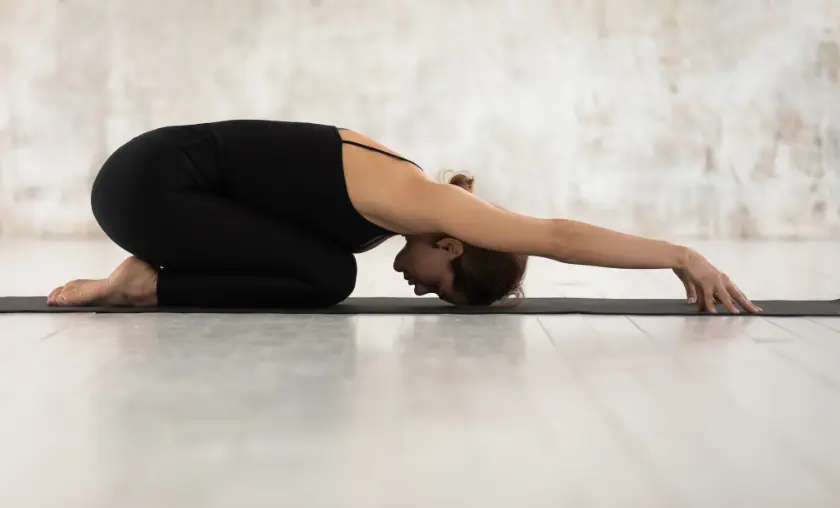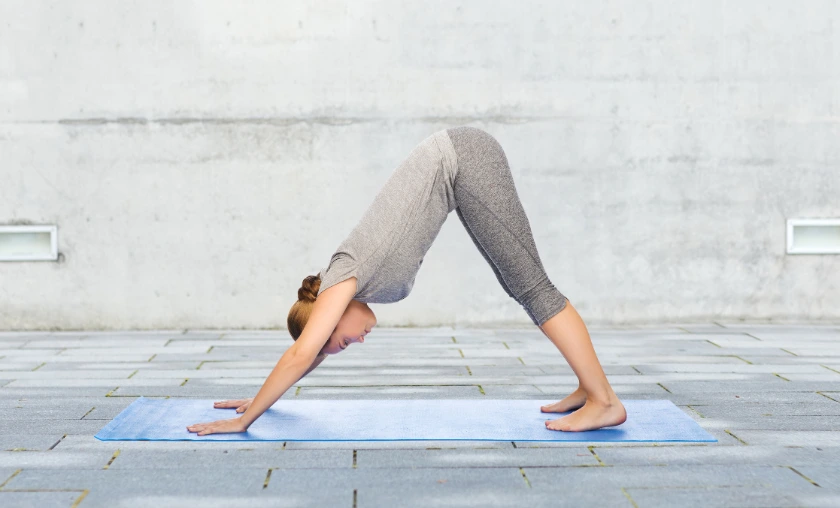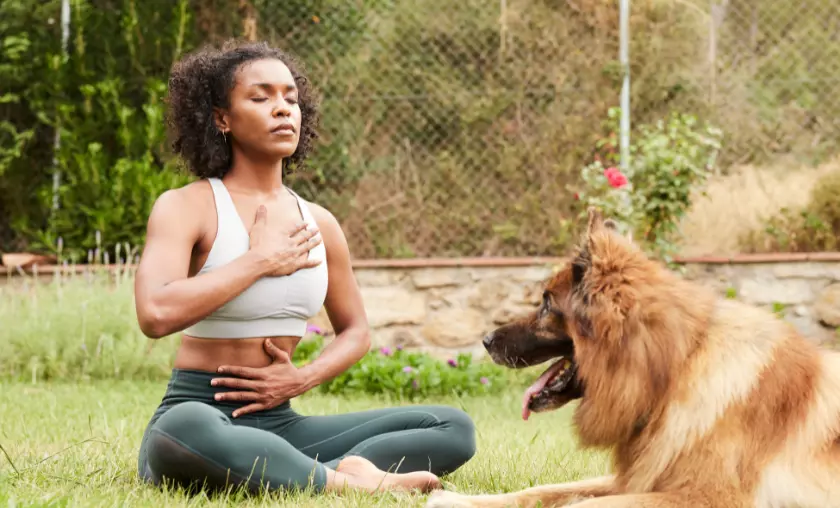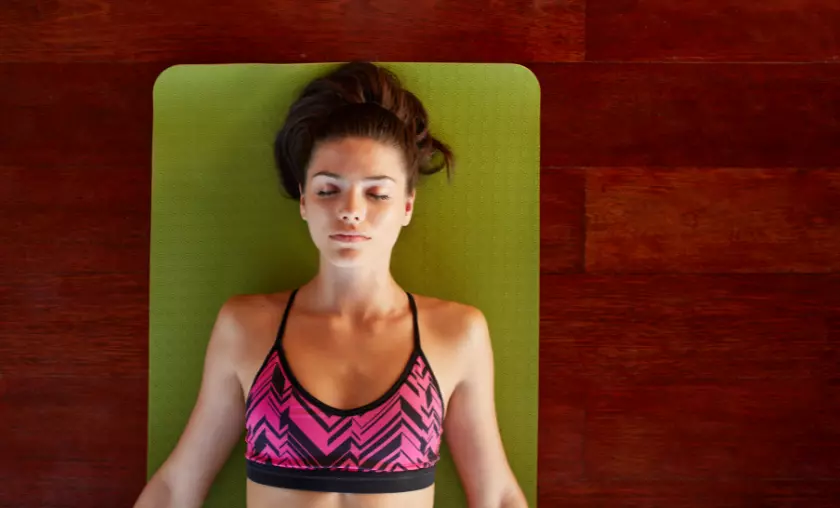How often do you find yourself battling a throbbing headache? For many of us, it’s an all-too-frequent occurrence that can leave us feeling drained, irritable, and unable to function at our best. The pain can be debilitating, whether a tension headache caused by stress, a migraine triggered by specific factors, or a sinus headache due to congestion. Although over-the-counter pain relievers may provide momentary alleviation, they frequently accompany side effects and fail to tackle the underlying causes of our headaches. There are a number of natural remedies for headaches, including yoga. Headache Yoga Poses are a series of gentle yoga poses that can help to relieve tension, improve circulation, and reduce pain.
But what if I told you that there’s a natural, drug-free way to alleviate headache symptoms and even prevent them from occurring in the first place? That’s where yoga comes into play. In this comprehensive guide, we’ll explore various yoga poses specifically designed to provide relief from different types of headaches. We’ve covered you, from tension headaches to migraines, sinus headaches, and stress-induced head pain.
Understanding Headaches and Their Causes
Before diving into the world of yoga for headache relief, it’s crucial to understand the enemy we’re up against: headaches themselves. Headaches can be incredibly complex and have various triggers, making them challenging to manage. Let’s briefly explore some common headache types and their causes:
Now that we have a basic understanding of the various headache types and their causes let’s explore how yoga can help us manage and alleviate these painful episodes.
The Role of Yoga in Headache Management
Yoga is not just about striking impressive poses or achieving physical flexibility; it’s a holistic practice encompassing the mind, body, and soul. Through a combination of physical postures, controlled breathing, meditation, and mindfulness, yoga has the potential to address the underlying causes of headaches and provide natural relief. Here’s how yoga can play a pivotal role in managing headaches:
Now that we’ve laid the groundwork, let’s delve into specific yoga poses that can relieve tension headaches.
Headache Yoga Poses for Relief
Headache Yoga PosesBalasana (Child’s Pose)

How to Do It:
Balasana, or Child’s Pose, is a comforting posture that can help alleviate neck, shoulders, and upper back tension. It also calms the mind and reduces stress, making it an excellent choice for those battling tension headaches caused by emotional strain or poor posture.
Adho Mukha Svanasana (Downward-Facing Dog)

How to Do It:
Adho Mukha Svanasana, or Downward-Facing Dog, is a fantastic pose for relieving tension headaches by stretching the spine, neck, and shoulders. It also promotes blood circulation to the head and encourages relaxation.
Utthita Trikonasana (Extended Triangle Pose)

How to Do It:
Utthita Trikonasana, or Extended Triangle Pose, stretches the entire body, relieving tension in the spine and improving posture. It’s beneficial for those with tension headaches caused by muscle tightness in the upper body.
These yoga poses in your routine can be a game-changer in your battle against tension headaches. Remember to practice regularly and mindfully, focusing on your breath and alignment.
Yoga Poses for Migraine Relief
Headache Yoga PosesSupta Baddha Konasana (Reclining Bound Angle Pose)

How to Do It:
Migraines can be excruciatingly painful and often come with sensitivity to light and sound. Supta Baddha Konasana, also known as Reclining Bound Angle Pose, offers a cocoon of comfort. This pose relaxes the body, eases tension, and calms the mind. It’s a valuable tool in your arsenal against migraines.
Viparita Karani (Legs-Up-the-Wall Pose)

How to Do It:
Viparita Karani, or Legs-Up-the-Wall Pose, is a potent ally against migraines. By allowing blood to flow away from the head and towards the heart, this pose can help reduce the intensity of a migraine. It’s a soothing respite when the world is spinning out of control.
Bhramari Pranayama (Humming Bee Breath)

Bhramari Pranayama, or Humming Bee Breath, is a breathing technique that can work wonders during a migraine attack. Follow these steps to practice it:
How to Do It:
Humming Bee Breath helps reduce stress, lower blood pressure, and calm the mind—essential for managing migraines. The gentle vibrations created during this practice can relieve and distract from the pain.
Yoga Poses for Sinus Headaches
Headache Yoga PosesJala Neti (Nasal Cleansing)

How to Do It:
Jala Neti, or Nasal Cleansing, is a centuries-old yogic practice that involves rinsing the nasal passages with saline water. It’s incredibly effective for relieving sinus congestion and headaches associated with sinusitis or allergies. By clearing the nasal passages, you can alleviate pressure and discomfort in the head.
Bhastrika Pranayama (Bellows Breath)

Bhastrika Pranayama, or Bellows Breath, is a dynamic breathing technique that can help clear sinus congestion. Here’s how to practice it:
How to Do It:
Bellows Breath increases oxygen flow and helps to clear mucus from the nasal passages, making it an excellent choice for sinus headache relief.
Setu Bandhasana (Bridge Pose)

How to Do It:
Setu Bandhasana, or Bridge Pose, promotes circulation and relieves sinus headaches. The gentle inversion of the pose can help drain excess mucus from the sinuses and reduce pressure in the head.
Incorporating these yoga poses and practices into your routine can significantly relieve migraine and sinus headaches. Consistency is critical; practicing these poses regularly can help you manage and prevent future episodes.
Yoga Poses for Stress-Induced Headaches
Headache Yoga PosesSavasana (Corpse Pose)

How to Do It:
Savasana, or Corpse Pose, is the ultimate relaxation pose in yoga. It’s not just about physical stillness; it’s an opportunity to release mental and emotional tension. Stress-induced headaches often have roots in an overactive mind, and Savasana helps calm the mental storm, bringing much-needed peace and clarity.
Anulom Vilom Pranayama (Alternate Nostril Breathing)

Anulom Vilom Pranayama, known as Alternate Nostril Breathing, is a straightforward yet potent breathing technique for stress reduction and mental clarity. Here’s how to perform it:
How to Do It:
Alternate Nostril Breathing balances the nervous system, reducing stress and anxiety. Regular practice can help prevent stress-induced headaches and provide immediate relief during a headache episode.
Vajrasana (Thunderbolt Pose)

How to Do It:
Vajrasana, or Thunderbolt Pose, is a grounding and calming posture. It promotes relaxation and can help reduce stress-induced headaches by allowing you to center your energy and find inner peace.
Now that we’ve explored yoga poses to tackle stress-induced headaches let’s turn our attention to proactive measures to prevent headaches.
Yoga Lifestyle Tips to Prevent Headaches
Headache Yoga PosesRegular Practice and Consistency

Consistency is key in harnessing the power of yoga to prevent headaches. Establishing a regular practice routine, even if it’s just a few minutes each day, can significantly reduce the frequency and intensity of headaches. Whether you prefer morning or evening practice, find a time that suits you and commit to it. Consistency strengthens your body and enhances your ability to manage stress.
Maintaining Proper Hydration

Dehydration can be a sneaky trigger for headaches. Ensure you drink enough water throughout the day, especially before and after your yoga practice. Proper hydration helps maintain bodily functions and can alleviate the intensity of headaches, particularly tension headaches.
Stress Reduction Techniques

Yoga transcends the confines of the mat; it’s a lifestyle. Integrate stress-reduction practices into your daily routine. Meditation, mindfulness, and deep breathing exercises can help you manage stress and prevent it from escalating into headaches. Even dedicating brief moments throughout the day to engage in calming breath exercises can yield a substantial impact.
Diet & Nutrition

Your dietary choices are pivotal in headache prevention. Steer clear of trigger foods, which may differ among individuals but often encompass caffeine, alcohol, processed items, and excessive sugar. Instead, choose a well-rounded diet abundant in whole foods, encompassing fruits, vegetables, and lean proteins. Additionally, some yoga practitioners discover relief by practicing mindful eating, which promotes savoring each bite and dining with gratitude.
Precautions and Contraindications
Headache Yoga PosesConsultation with a Healthcare Professional

Although yoga can offer significant benefits in headache management, seeking guidance from a healthcare professional before initiating any new exercise or wellness program, mainly if you have underlying health issues or suffer from severe and chronic headaches, is crucial. A medical assessment can aid in identifying any particular triggers or conditions that necessitate specialized treatment. Your healthcare provider can also provide insights into the safety and appropriateness of specific yoga poses based on your health status.
Avoiding Overexertion

Yoga should be a gentle and nurturing practice. Overexertion can lead to injury and exacerbate headaches, especially if you’re already in pain. Listen to your body and practice within your limits. Avoid forceful movements or pushing yourself too hard to achieve a particular pose. Remember that yoga is about balance and self-care, not competition.
Adapting Poses to Individual Needs

Everyone is unique, and what works for one person may not be suitable for another. It’s crucial to adapt yoga poses to your individual needs and limitations. If a posture causes discomfort or pain, modify it or seek guidance from a certified yoga instructor. Props like yoga blocks, bolsters, and straps can provide support and make poses more accessible.
Conclusion
Yoga’s holistic approach, encompassing the mind, body, and spirit, empowers us to manage and prevent headaches. It teaches us mindfulness, allowing us to detect early signs of stress and tension, averting headaches before they take hold. Yoga fosters balance, prioritizing self-care and stress management to reduce the likelihood of headaches. Beyond physical benefits, it enhances emotional and psychological well-being, managing stress and anxiety.
Yoga is a comprehensive toolkit for headache relief, addressing root causes and equipping us with the means to find equilibrium in our lives. As we embrace this ancient practice, may it lead us to greater wellness and freedom from headaches. Whether a daily or weekly routine, may you discover the serenity and wholeness that yoga offers. Thank you for joining me on this enlightening journey. Namaste.
FAQs
Can yoga help with my headaches?
Absolutely. Yoga is more than just physical exercise; it’s a holistic practice that addresses the root causes of headaches, including tension, stress, and poor posture. By practicing specific yoga poses and relaxation techniques, you can find natural relief and even prevent headaches from occurring.
What type of yoga poses are most effective for headache relief?
There are various yoga poses tailored to different types of headaches. For tension headaches, poses like Child’s Pose (Balasana) and Downward-Facing Dog (Adho Mukha Svanasana) can work wonders. Migraine relief can be found in the Reclining Bound Angle Pose (Supta Baddha Konasana) and Legs-Up-the-Wall Pose (Viparita Karani).
I’m a beginner. Can I still practice headache yoga poses?
Absolutely. Many headache relief poses are beginner-friendly and can be adapted to your experience level. Start slowly, listen to your body, and consider taking guidance from a certified yoga instructor. Gradually, you’ll become more comfortable with the poses.
How often should I practice headache yoga poses to see results?
Consistency is key. Even practicing for just a few minutes each day can yield positive results over time. However, the frequency and duration can vary from person to person. Listen to your body and adjust your practice accordingly.
Can yoga lifestyle tips prevent headaches?
Yes, incorporating yoga lifestyle tips into your daily routine can significantly reduce the frequency and intensity of headaches. Regular practice, proper hydration, stress reduction techniques, and a balanced diet contribute to overall well-being and headache prevention.
To read more similar articles, click here
Thanks for visiting our Website. If you appreciate our work, kindly show us some support in our comments section 🙂


